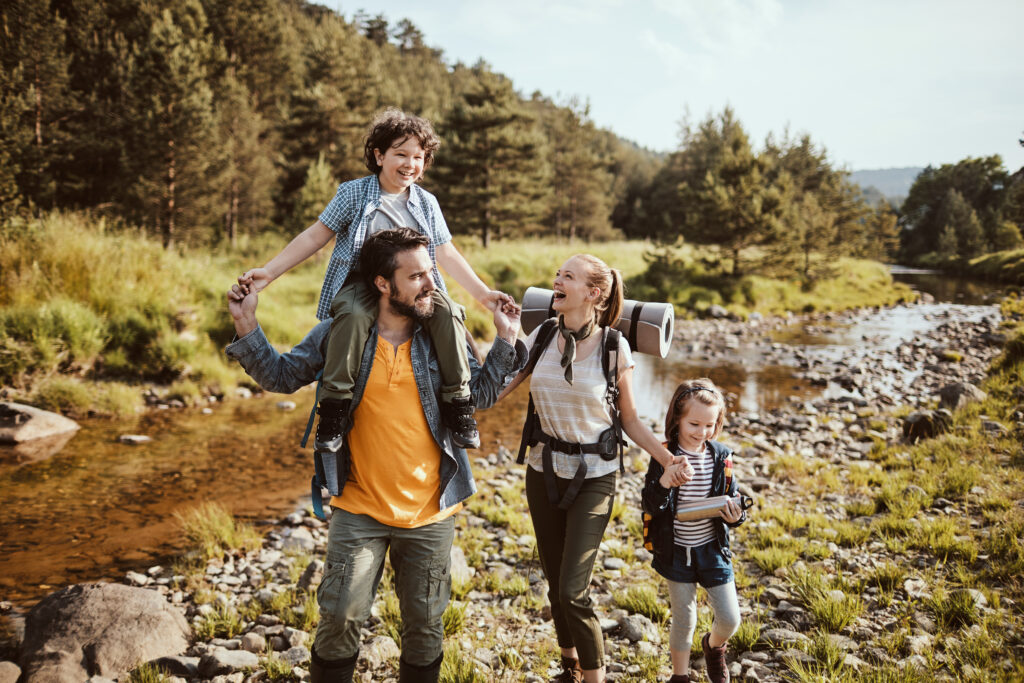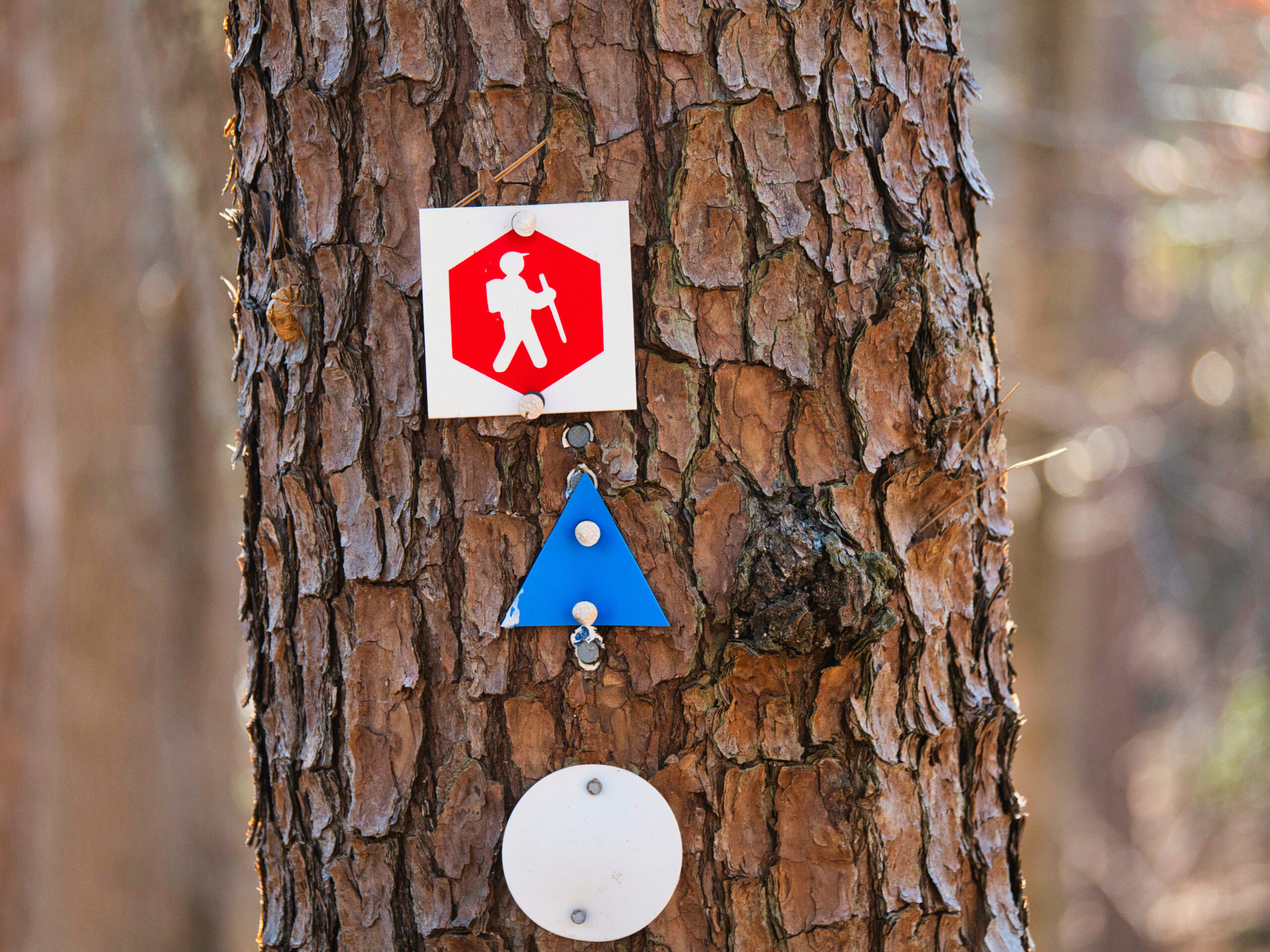
Trail Safety for Families

- reisertrailcraft
- August 25, 2023
Trail Safety for Families
Exploring the great outdoors with your family can be an exciting and rewarding experience. From breathing in the fresh air to discovering new sights, family hikes provide an opportunity for quality bonding time. However, it is important to prioritize safety when venturing into nature’s playground. Being aware of the potential risks and adopting safe hiking practices will ensure that your family enjoys a memorable and secure outdoor adventure.
Understanding the Importance of Trail Safety
Before setting foot on the trail, it’s crucial to comprehend why trail safety is essential. Unprepared hiking poses various risks that can turn a fun day out into a dangerous situation. From physical injuries to getting lost in the wilderness, the potential dangers are real. By being knowledgeable about these risks and taking necessary precautions, you can protect your family and have peace of mind during your hikes.
When it comes to trail safety, knowledge is power. Understanding the risks associated with unprepared hiking is the first step towards ensuring a safe and enjoyable outdoor experience. The wilderness can be unpredictable, and lack of preparedness can lead to unfortunate incidents. Inadequate gear, such as ill-fitting shoes or lack of rain gear, can make a hike uncomfortable or even dangerous. Imagine walking for miles with blisters forming on your feet or getting drenched in a sudden downpour without any protection. These situations not only compromise your comfort but also put your well-being at risk.
Carrying essential items like a map and compass is crucial for navigation. The vastness of the wilderness can easily disorient even the most experienced hikers. Without a map or compass, you may find yourself wandering aimlessly, unsure of which direction to go. This not only wastes precious time but also increases the chances of encountering dangerous situations. By equipping yourself with the necessary tools, you can confidently navigate through the trails, ensuring that you stay on the right path and reach your destination safely.
Knowledge of potential hazards is another vital aspect of trail safety. Slippery slopes, steep cliffs, and unstable terrain can pose significant risks if not approached with caution. Understanding how to assess and navigate these hazards can prevent accidents and injuries. Additionally, being aware of the wildlife that inhabits the area is crucial for avoiding dangerous encounters. Knowing how to react when encountering wildlife, such as bears or snakes, can mean the difference between a peaceful coexistence and a potentially life-threatening situation.
Risks Associated with Unprepared Hiking
The wilderness can be unpredictable, and lack of preparedness can lead to unfortunate incidents. Inadequate gear, such as ill-fitting shoes or lack of rain gear, can make a hike uncomfortable or even dangerous. Additionally, not carrying essential items like a map or compass can increase the chances of getting lost. Knowledge of potential hazards, such as slippery slopes or dangerous wildlife encounters, is crucial for avoiding accidents.
Unprepared hiking can also take a toll on your physical health. Without proper gear, you may experience blisters, sore muscles, or even more severe injuries. Ill-fitting shoes can cause discomfort and pain, making it difficult to enjoy the hike. Lack of rain gear can leave you soaked and vulnerable to hypothermia in cold and wet conditions. By investing in quality gear and ensuring that you are adequately prepared, you can minimize the risk of physical discomfort and injury.
Getting lost in the wilderness is a fear that many hikers have. Without a map or compass, it’s easy to lose your way, especially in unfamiliar territory. Being lost not only causes anxiety and panic but also exposes you to additional risks. You may wander deeper into the wilderness, away from help or civilization. This can lead to exhaustion, dehydration, and exposure to harsh weather conditions. By understanding the importance of carrying navigation tools and having a basic understanding of map reading, you can confidently explore the trails without the fear of getting lost.
Benefits of Safe Hiking Practices
Safe hiking practices offer numerous benefits beyond just mitigating risks. Teaching your children about trail safety instills in them a sense of responsibility and self-awareness. By involving them in the preparation process, such as packing essential items and discussing potential hazards, you empower them to make informed decisions and take ownership of their safety. This not only enhances their confidence but also fosters a deeper connection with nature.
Furthermore, safe hiking practices allow you to fully immerse yourself in nature without worrying about potential mishaps. When you are well-prepared and knowledgeable about the risks, you can focus on the beauty and tranquility of the outdoors. Whether it’s admiring breathtaking vistas, listening to the soothing sounds of nature, or spotting wildlife, safe hiking practices enable you to experience the wonders of the natural world with a clear and peaceful mind.
By embracing safe hiking practices, you can create lifelong memories and nurture a love for the outdoors in your children. Exploring the trails together as a family not only strengthens your bond but also instills a sense of adventure and appreciation for the environment. Teaching your children about the importance of trail safety sets the foundation for a lifetime of responsible outdoor exploration, ensuring that they can enjoy the wonders of nature in a safe and sustainable manner.
Preparing for your Family Hike
Proper preparation is key to a successful and safe family hike. Taking the time to gather the necessary gear and choose an appropriate trail will ensure an enjoyable and worry-free adventure.
Before embarking on your family hike, it’s important to consider a few key factors. Firstly, assess the fitness levels and abilities of each family member. This will help you determine the difficulty level of the trail you should choose. Additionally, take into account any specific needs or limitations, such as allergies or medical conditions, to ensure everyone’s safety and comfort.
Now that you’ve taken these factors into consideration, let’s delve into the essential gear you’ll need for a safe hiking experience.
Essential Gear for Safe Hiking
Investing in the right gear before hitting the trail is vital. Make sure to equip each family member with sturdy and comfortable footwear to prevent sprained ankles and blisters. Opt for hiking shoes or boots that provide good ankle support and have a reliable grip on various terrains.
Dressing appropriately for the weather is also crucial. Dressing in layers allows for temperature adjustments as you hike. Start with a moisture-wicking base layer to keep sweat away from the skin, then add a insulating mid-layer, and finally, a waterproof and windproof outer layer to protect against the elements. Don’t forget to bring hats, gloves, and sunglasses for added protection.
A reliable backpack is an essential item for any hiker. Choose one that fits well and has adjustable straps for a comfortable fit. Inside your backpack, be sure to pack essentials like water, snacks, a first aid kit, and a flashlight. It’s also a good idea to carry a fully charged cell phone with a portable charger to provide a means of communication in case of emergencies.
Now that you’re equipped with the necessary gear, let’s move on to choosing the right trail for your family.
Choosing the Right Trail for Your Family
Not all trails are created equal, and selecting the right one for your family is crucial. Consider the difficulty level, length, and terrain of the trail. For beginners, opt for well-marked and maintained paths with moderate inclines. This will ensure a more enjoyable experience for everyone and minimize the risk of accidents or injuries.
Researching the trail beforehand is highly recommended. Look for detailed trail maps and read reviews from other families who have hiked the same trail. This will give you insights into any potential challenges or safety concerns. Pay attention to factors such as trail conditions, wildlife encounters, and any specific regulations or permits required.
Additionally, consider the scenic beauty and points of interest along the trail. Choosing a trail that offers breathtaking views or interesting landmarks will enhance the overall experience for your family.
By taking the time to prepare and choose the right gear and trail, you’re setting the stage for a memorable and enjoyable family hike. So lace up your hiking boots, pack your backpacks, and get ready to create lasting memories in the great outdoors!
Safety Guidelines During the Hike
When you’re finally on the trail, adhering to safety guidelines will ensure a smooth and secure hiking experience for your family.
Staying on the Trail
One fundamental rule of hiking safety is to stay on the designated trail. Venturing off-trail can lead to accidental injuries, habitat destruction, and increase the risk of getting lost. Teach your children the importance of following the trail markers and staying together as a group to prevent any mishaps.
Wildlife Awareness and Interaction
Encountering wildlife is an exciting part of hiking, but it’s crucial to observe from a safe distance. Teach your family to respect wildlife and refrain from approaching or feeding them. Educate your children about potential dangerous animals in the area and how to respond if they encounter one. Carrying bear spray or other wildlife deterrents can provide an added layer of protection.
Handling Emergencies on the Trail
Despite taking all necessary precautions, emergencies can still happen. Being prepared to handle unexpected situations will ensure the safety and well-being of your family.
Basic First Aid Knowledge
Equipping yourself with basic first aid knowledge is essential when hiking with your family. Know how to handle common injuries such as cuts, sprains, or insect stings. Pack a first aid kit containing bandages, antiseptic wipes, and any required medications. Consider enrolling in a first aid course to further enhance your skills.
What to Do When Lost
Getting lost can be a frightening experience, but knowing what to do in such a situation can save lives. Teach your family members to stay calm and not to panic. Use navigational tools, such as a map and compass, or a GPS device to find your way back. If all else fails, staying in one place, making noise, and attracting attention from search parties are essential survival strategies.
Post-Hike Safety Measures
Your family hike doesn’t end when you reach the trailhead. Taking post-hike safety measures ensures that everyone remains healthy and injury-free even after you’ve completed the hike.
Checking for Ticks and Other Pests
After your hike, thoroughly check each family member for ticks and other pests. Ticks can carry diseases such as Lyme disease, so it’s crucial to remove them promptly. Consider using insect repellent during the hike and wearing long-sleeved clothing to minimize the risk of tick bites.
Proper Hydration and Nutrition After Hiking
Replenishing fluids and nutrients lost during the hike is essential for recovery. Ensure that everyone drinks plenty of water and consumes a balanced meal or snack containing proteins, carbohydrates, and healthy fats. Pay attention to any signs of dehydration or exhaustion and seek medical attention if necessary.
By following these trail safety guidelines, you can create lasting memories with your family while minimizing risks. Remember that being prepared, staying aware of your surroundings, and teaching your children the importance of trail safety are key to a fun and secure outdoor adventure. Lace-up your hiking boots, grab your backpack, and embark on an unforgettable journey into nature, knowing that your family’s safety is in good hands.
- August 25, 2023
- By reisertrailcraft
Related Posts

Wildlife Watching
